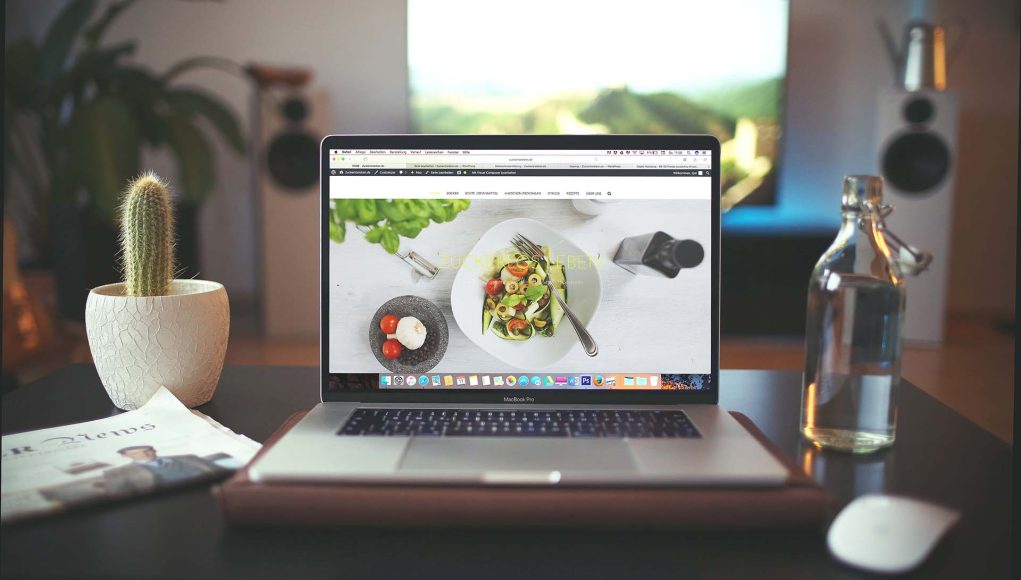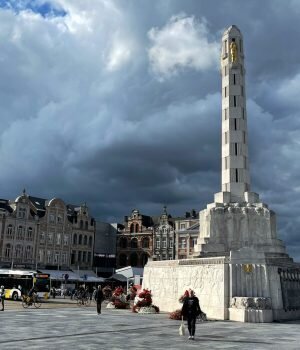You land on someone’s website and you see a pixelated image. What do you do?
Hit the back button. Think “hmm I’m not sure if I can trust this company”. Or, maybe a mixture of both?
Your website is a reflection of your business. It takes just 0.05 seconds for someone to form an opinion about your website. Using poor quality imagery creates a negative perception of your company, which makes building trust and interest to make a purchase a remote possibility.
But if you are trying to sell products or services on your website, there’s more.
When creating a product or sales page, you need images that get the user’s attention and make them want to hit the ‘buy’ button.
In this post I’m going to explore 3 types of images you should use on your product or sales pages to help you drive more conversions.
1. Contextual images
Images of the product in use. These help people imagine themselves using the product. Whether it be sharing your delicious food around a dinner table or creating an impression with a stunning outfit, contextual photos are great to give people an insight into how they can use your product and what the experience might look like.
Example: Fashion brands typically show people wearing their clothes on their website. On their website, Zara shows images of people wearing their clothes in their natural environment – whether that be on the street, on holiday, or at home. This helps visitors visualise how different pieces can be combined to create a particular look or how they can work for a specific occasion e.g. on holiday.
Why it works: Showing your product in use helps people understand how the product looks and feels for the person using it. Before buying an outfit, you want to understand how it will look off the coat hanger. Zara gives a real sense for how good the clothes can look on people like them and how they might combine them with other pieces for a complete look.
2. Appealing images
Images that showcase your products in an irresistible manner. This makes people want to get their hands on your product. Whether it is a beautiful dress, delicious food, or a transformative programme, show appealing images that people cannot resist because they look so good.
Example: Lush products are highly visual. They look so fresh that you can even see the organic ingredients inside their products. On their website, Lush prominently displays large images of their freshly handmade products so people can see the ingredients packed inside. The list of ingredients align with the product images, helping to reinforce the fact that their products really are made from fresh ingredients.
Why it works: Featuring an image of how great your product looks provides visual proof. People can see the quality of the ingredients or materials used (e.g. organic produce) as well as the careful workmanship to create your product (e.g. hand stitching). You can also combine complementary products together in a single image to inspire gift ideas e.g. think of the Lush Relax gift box that combines all their most relaxing products.
3. Sensual images
Images that stimulate the senses. Besides sight, you can also invoke the senses of sound, smell and touch.
Example: Gü puds look so good that you feel you could eat them from the screen. This is because they stimulate the different senses. You can almost feel the sauce ooze from the crust and flow into your mouth. You can already smell the freshly baked puddings that just came out of the oven.
Why it works: Using rich multi-sensory imagery helps transport your reader to another place. It helps create a stronger longer-lasting image by creating a multi-sensory experience.
Key takeaways
On your website, good imagery is not an ideal; it is essential. It makes visitors want to spend more time on your site, boosts the likelihood of making sales, and ultimately improves the success of your website.
If you land on a website and you see an amazing image, you stick around.
For more business and entrepreneurship tips, subscribe to our weekly newsletter and follow us on Twitter, Facebook, Instagram and LinkedIn.






